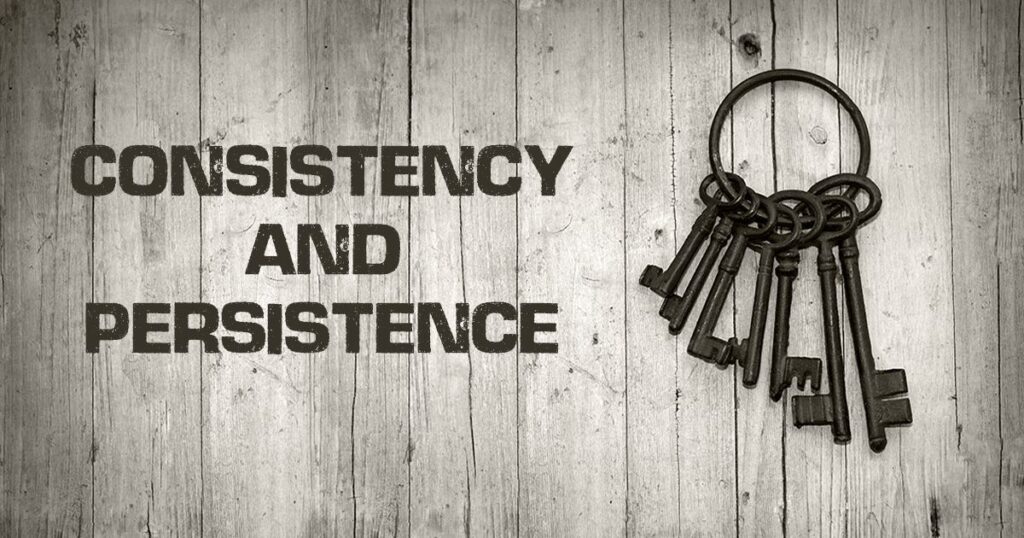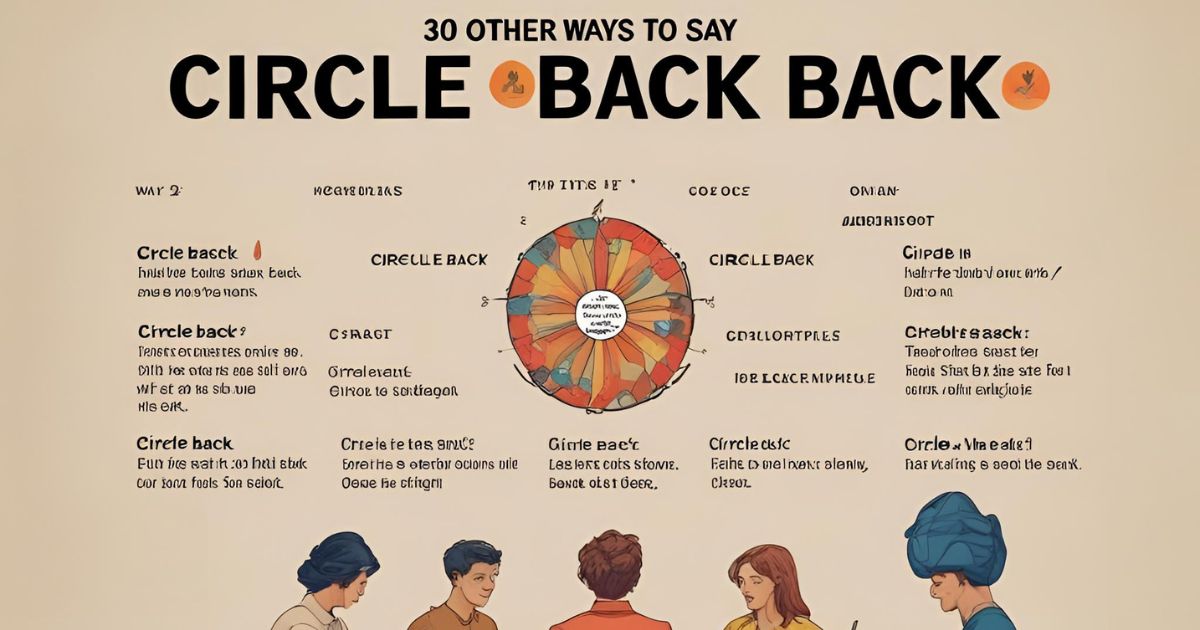Effective communication serves as the foundation of successful business relationships, yet many professionals rely on repetitive phrases that dilute their message impact. The ubiquitous phrase “circle back” has become so overused in workplace communication that it often fails to convey genuine engagement or specific intent.
This comprehensive guide provides thirty strategic alternative phrases for circle back that will enhance your professional correspondence and demonstrate thoughtful communication practices.
When you master varied business email phrases, you create stronger connections with colleagues, clients, and stakeholders. Research indicates that professionals who use diverse vocabulary in their communications are perceived as more competent and engaging.
This transformation from generic corporate speak to purposeful language can significantly impact your career trajectory and business relationships.
Decoding “Circle Back”: Definition and Professional Context
The term “circle back” functions as professional shorthand for returning to a previous topic, checking progress, or scheduling future follow-up discussions. In business email contexts, professionals commonly use this phrase to indicate their intention to revisit the topic later after gathering additional information or consulting with team members.
However, the circle back meaning in business extends beyond simple postponement. It represents a commitment to continued engagement and accountability.
When used appropriately, it maintains momentum in professional relationships while allowing time for proper preparation or decision-making. Understanding this deeper meaning helps explain why selecting more specific formal alternatives to circle back can enhance message clarity and recipient engagement.
The circle back meaning in email communications often signals transition points in complex negotiations, project planning phases, or collaborative decision-making processes. This contextual usage demonstrates why having multiple professional ways to say circle back becomes essential for nuanced business communication.
Professional Assessment: When “Circle Back” Works and When It Fails

Modern workplace communication requires careful consideration of phrase selection and timing. While “circle back” maintains widespread acceptance in corporate environments, its effectiveness varies significantly based on context, relationship dynamics, and communication frequency.
Understanding these variables helps determine when alternative expressions for follow up might serve your purposes more effectively. The phrase works well in formal business settings where participants understand the implied timeline and next steps.
However, it can create confusion when recipients need specific information about timing, responsibilities, or expected outcomes. This ambiguity explains why many communication experts recommend developing a broader vocabulary of polite follow-up language that provides greater precision and clarity.
Successful professionals recognize that effective communication in business requires matching language choices to audience expectations and situational requirements. This strategic approach to vocabulary selection demonstrates professionalism while building stronger working relationships through thoughtful expression.
Strategic Analysis: Advantages and Disadvantages of Using “Circle Back”
Advantages
Circle back offers several practical benefits in professional communication. The phrase provides universally understood shorthand that efficiently communicates postponement without creating offense or urgency. Its neutral tone allows for graceful transition away from topics that require additional consideration or preparation.
The expression also maintains professional language standards while avoiding commitment to specific timelines or outcomes.
This flexibility proves valuable in dynamic business environments where circumstances change rapidly. Additionally, circle back creates space for collaborative decision-making by acknowledging that multiple perspectives or additional information may be necessary.
Disadvantages
Despite its widespread usage, circle back presents several communication challenges. The phrase can appear dismissive or evasive, particularly when used repeatedly in the same conversation or correspondence. Recipients may interpret it as avoidance rather than genuine commitment to continued engagement.
The generic nature of circle back also fails to provide specific information about next steps, timing, or expected outcomes. This ambiguity can create uncertainty and frustration among team members who need clear direction for project planning. Furthermore, overuse of this phrase can diminish your communication effectiveness and professional credibility.
The Complete Arsenal: 30 Strategic Alternatives to “Circle Back”

Immediate Action Alternatives
Follow up
Follow up represents the most direct and widely accepted circle back synonym for professional communications. This straightforward approach demonstrates clear intent while maintaining appropriate business tone. Example usage: “I will follow up with you next week regarding the proposal details.”
Revisit
Revisit suggests a thoughtful approach to reviewing previous discussions with fresh perspective. This formal alternative to circle back works particularly well when circumstances may have changed since initial conversations. The term implies openness to new information or adjusted approaches.
Touch base again
Touch base again provides a more casual yet professional tone that works effectively in email communication phrases. This alternative emphasizes relationship maintenance rather than formal business processes. It suggests collaborative partnership rather than hierarchical follow-up requirements.
Check in later
Check in later demonstrates respect for recipient schedules while maintaining accountability. This phrase works well in project management contexts where timing flexibility is important but follow-through remains essential.
Connect again
Connect again emphasizes relationship building and ongoing collaboration. This warm, engaging alternative works particularly well in team settings where you want to emphasize partnership rather than formal oversight.
Relationship-Building Alternatives
Reconnect
Reconnect proves ideal when significant time has passed since previous communication. This alternative acknowledges the gap while expressing genuine interest in reestablishing productive dialogue. It works well for reviving dormant projects or relationships.
Readdress
Readdress indicates the need to examine issues with fresh insights or additional information. This choice works well when circumstances have evolved since initial discussions, requiring new approaches or considerations.
Double-check
Double-check demonstrates commitment to accuracy and attention to detail. This business English vocabulary choice works excellently when precision matters most, such as confirming agreements or verifying specifications.
Get back to
Get back to offers casual flexibility while maintaining professional accountability. This approach allows time for other priorities while ensuring eventual response, making it valuable for email writing efficiency.
Take another look
Take another look implies thorough examination to ensure nothing important was overlooked. This alternative works well when reviewing documents, reports, or complex data that requires careful analysis.
Continuity-Focused Alternatives

Pick up where we left off
Pick up where we left off provides seamless transition language for ongoing projects or discussions. This alternative signals efficient continuation rather than starting over, making it valuable for project coordination.
Reach out again
Reach out again maintains friendly accessibility while indicating planned follow-up. This phrase works well for client communications where you want to emphasize availability and responsiveness.
Catch up
Catch up offers informal yet professional language that works well for team collaboration. This alternative emphasizes mutual information sharing rather than one-sided follow-up requirements.
Return to this
Return to this implies coming back to topics after gathering additional input or perspective. This choice works well when more information is needed before productive continuation can occur.
Check back in
Check back in demonstrates ongoing commitment while respecting timing considerations. This phrase works particularly well for project monitoring and progress tracking communications.
Review and Analysis Alternatives
Recap
Recap works excellently for summarizing previous discussions before moving forward. This organizational approach helps ensure all parties understand progress made and next steps required, making it valuable for meeting follow-up.
Reflect on
Reflect on encourages thoughtful consideration before proceeding. This alternative proves valuable for sensitive topics or complex decisions that benefit from careful contemplation and analysis.
Re-engage
Re-engage signals renewed focus and active involvement. This proactive alternative works well for reestablishing momentum on delayed projects or paused conversations that need fresh energy.
Pick it back up
Pick it back up provides casual encouragement for resuming paused activities. This phrase works well in team environments where collaborative spirit and shared responsibility are emphasized.
Reevaluate
Reevaluate suggests thorough review processes that might lead to adjustments or new approaches. This alternative works particularly well in strategic planning contexts where external factors might require course corrections.
Verification and Progress Alternatives
Confirm again
Confirm again shows diligence and helps prevent misunderstandings. This choice proves valuable when multiple parties need to align on important details before proceeding with implementation.
Update each other
Update each other creates a sense of mutual responsibility and shared commitment. This reciprocal approach works well for collaborative projects where both parties have information to contribute.
Close the loop
Close the loop suggests bringing discussions or projects to completion. This decisive alternative works well when multiple steps need coordination to reach final resolution and accountability.
Bring it back up
Bring it back up provides straightforward language for reintroducing previously discussed topics. This phrase works well in meeting contexts where agenda items need revisiting after additional consideration.
Reassess
Reassess implies examination of current approaches to determine if adjustments are necessary. This alternative works well when external factors may have changed, requiring strategic review.
Persistence and Completion Alternatives

Give it another go
Give it another go encourages renewed effort, particularly when previous attempts faced obstacles. This optimistic approach works well for team motivation and project persistence.
Go over again
Go over again implies meticulous review of details to ensure accuracy. This alternative works well for document review and quality assurance processes that require thoroughness.
Reexamine
Reexamine suggests deliberate review to gain fresh understanding or confirmation. This choice works well for problem-solving scenarios that require deeper analysis or investigation.
Check progress
Check progress demonstrates responsible follow-through and commitment to project success. This alternative works particularly well for timeline management and deliverable tracking.
Wrap back around
Wrap back around provides friendly, flexible language for informal follow-ups. This casual yet professional alternative works well for maintaining relationships while managing multiple priorities effectively.
Conclusion: Elevating Your Professional Communication Standards
Mastering diverse follow-up vocabulary transforms routine business communications into opportunities for relationship building and professional growth. These thirty professional alternatives to circle back provide precise tools for expressing your intentions while demonstrating thoughtful communication practices that set you apart in competitive business environments.
The investment in varied professional language pays substantial dividends through improved relationships, clearer communications, and enhanced professional reputation. Your colleagues, clients, and stakeholders will notice and appreciate the care you demonstrate through thoughtful word selection and precise expression of follow-up intentions.
By implementing these alternatives systematically and consistently, you develop a more sophisticated communication style that enhances your professional effectiveness and builds stronger workplace connections. Start with alternatives that feel natural, then gradually expand your vocabulary as these new phrases become comfortable components of your professional communication toolkit.

Faraz Babar is a skilled wordsmith with a keen interest in the rich world of synonyms and language nuances. With a flair for simplifying complex vocabulary, he crafts content that’s both enlightening and enjoyable to read.











